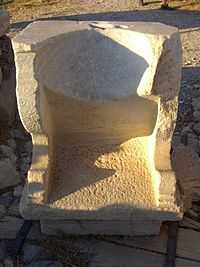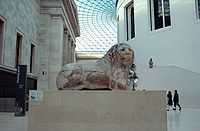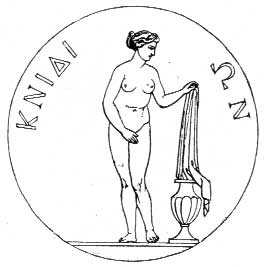Knidos
| Knidos Κνίδος (Ancient Greek) | |
|---|---|
 The port of Knidos | |
 | |
| Alternate name | Cnidus |
| Location | Yazıköy, Muğla Province, Turkey |
| Region | Caria |
| Coordinates | 36°41′09″N 27°22′30″E / 36.68583°N 27.37500°ECoordinates: 36°41′09″N 27°22′30″E / 36.68583°N 27.37500°E |
| History | |
| Associated with | Eudoxus, Ctesias, Sostratus |
| Events | Battle of Cnidus |
| Site notes | |
| Excavation dates | 1857–1858 |
| Archaeologists | Charles Thomas Newton |
| Public access | Yes |
| Website | Knidos Archaeological Site |
Knidos or Cnidus (/ˈnaɪdəs/; Ancient Greek: Κνίδος) is an ancient settlement located in south-western Asia Minor, modern-day Turkey. It was an ancient Greek city of Caria, part of the Dorian Hexapolis. It was situated on the Datça peninsula, which forms the southern side of the Sinus Ceramicus, now known as Gulf of Gökova. By the 4th century BC, Knidos was located at the site of modern Tekir, opposite Triopion Island. But earlier, it was probably at the site of modern Datça (at the half-way point of the peninsula).[1]
It was built partly on the mainland and partly on the Island of Triopion or Cape Krio. The debate about it being an island or cape is caused by the fact that in ancient times it was connected to the mainland by a causeway and bridge. Today the connection is formed by a narrow sandy isthmus. By means of the causeway the channel between island and mainland was formed into two harbours, of which the larger, or southern, was further enclosed by two strongly built moles that are still in good part entire.
The extreme length of the city was little less than a mile, and the whole intramural area is still thickly strewn with architectural remains. The walls, both of the island and on the mainland, can be traced throughout their whole circuit; and in many places, especially round the acropolis, at the northeast corner of the city, they are remarkably perfect.
History
Knidos was a city of high antiquity and as a Hellenic city probably of Lacedaemonian colonization. Along with Halicarnassus (present day Bodrum, Turkey) and Kos, and the Rhodian cities of Lindos, Kamiros and Ialyssos it formed the Dorian Hexapolis, which held its confederate assemblies on the Triopian headland, and there celebrated games in honour of Apollo, Poseidon and the nymphs.
The city was at first governed by an oligarchic senate, composed of sixty members, and presided over by a magistrate; but, though it is proved by inscriptions that the old names continued to a very late period, the constitution underwent a popular transformation. The situation of the city was favourable for commerce, and the Knidians acquired considerable wealth, and were able to colonize the island of Lipara, and founded a city on Corcyra Nigra in the Adriatic. They ultimately submitted to Cyrus, and from the battle of Eurymedon to the latter part of the Peloponnesian War they were subject to Athens.
In their expansion into the region, the Romans easily obtained the allegiance of Knidians, and rewarded them for help given against Antiochus III the Great by leaving them the freedom of their city.
During the Byzantine period there must still have been a considerable population: for the ruins contain a large number of buildings belonging to the Byzantine style, and Christian sepulchres are common in the neighbourhood.
Eudoxus, the astronomer, Ctesias, the writer on Persian history, and Sostratus, the builder of the celebrated Pharos at Alexandria, are the most remarkable of the Knidians mentioned in history.

Excavation history
The first Western knowledge of the site was due to the mission of the Dilettante Society in 1812, and the excavations executed by C. T. Newton in 1857–1858.



References
- ↑ Simon Hornblower, A Commentary on Thucydides 3:849, 2009. ISBN 0-19-927648-X cited text
![]() This article incorporates text from a publication now in the public domain: Chisholm, Hugh, ed. (1911). Encyclopædia Britannica (11th ed.). Cambridge University Press
This article incorporates text from a publication now in the public domain: Chisholm, Hugh, ed. (1911). Encyclopædia Britannica (11th ed.). Cambridge University Press
External links
| Wikimedia Commons has media related to Knidos. |